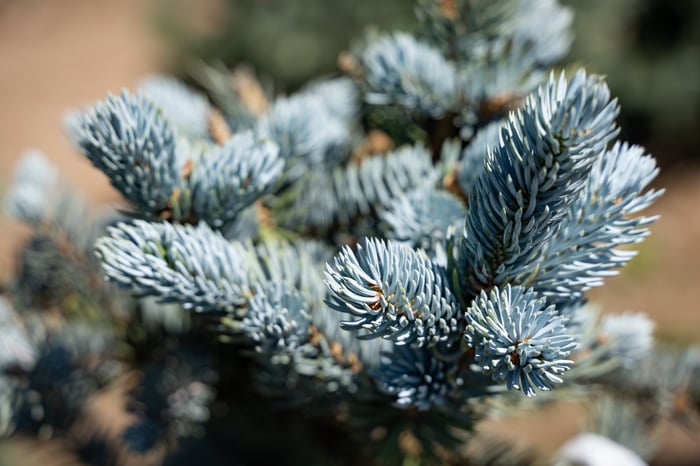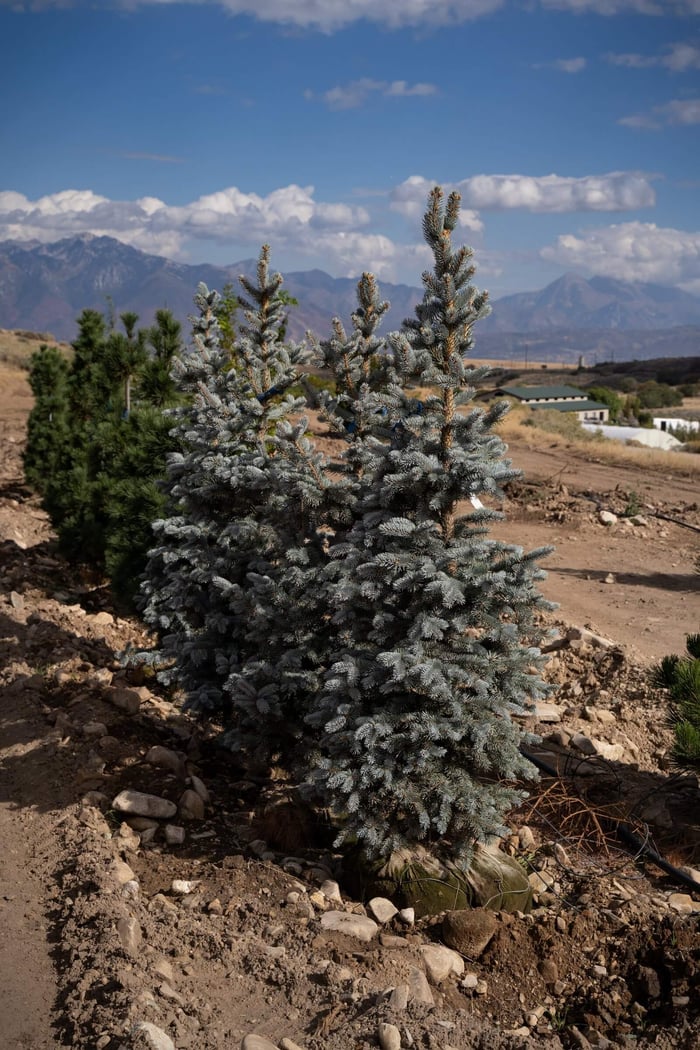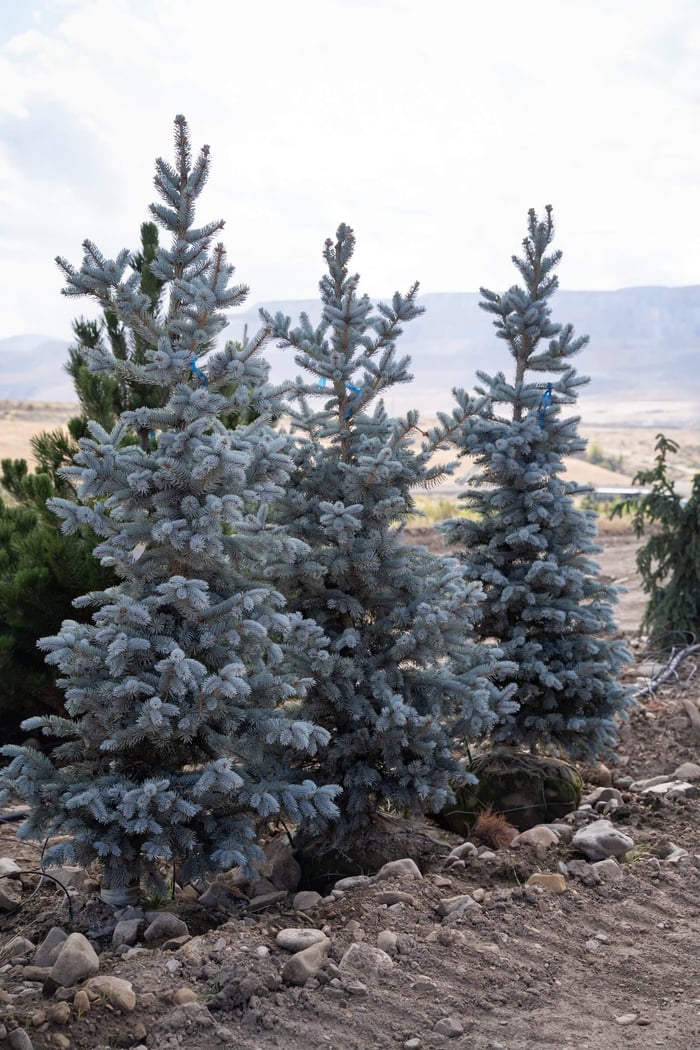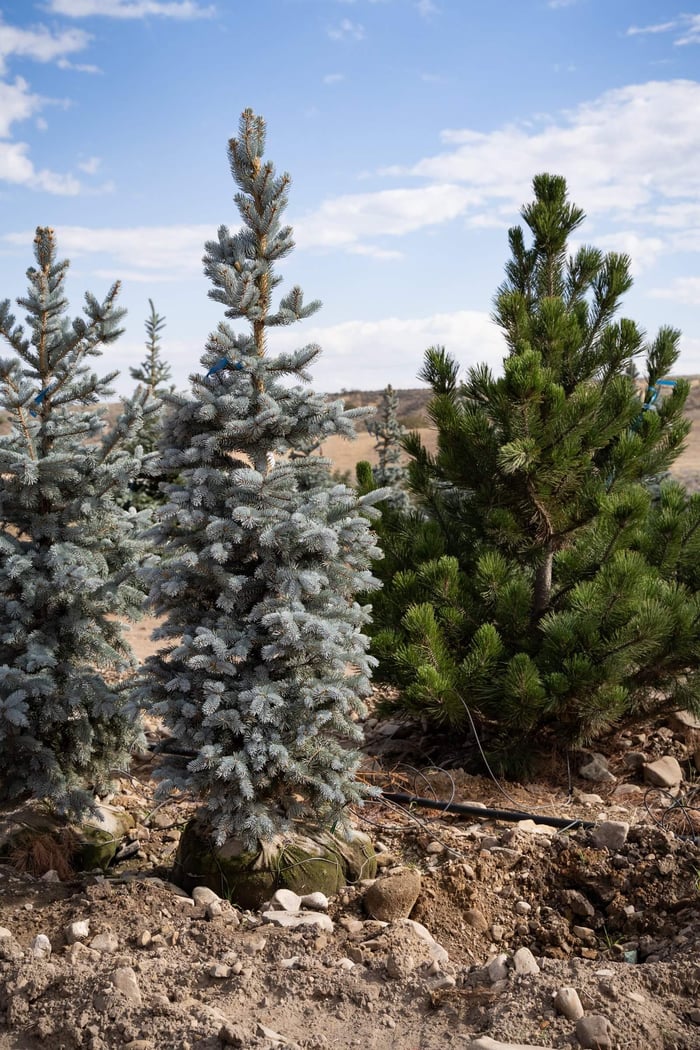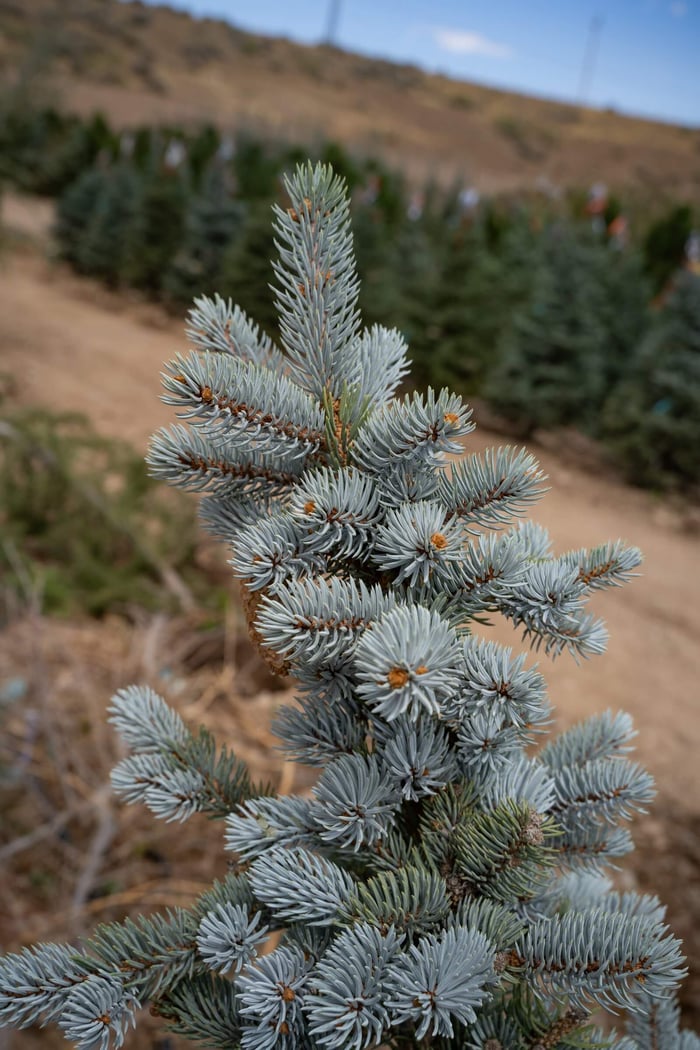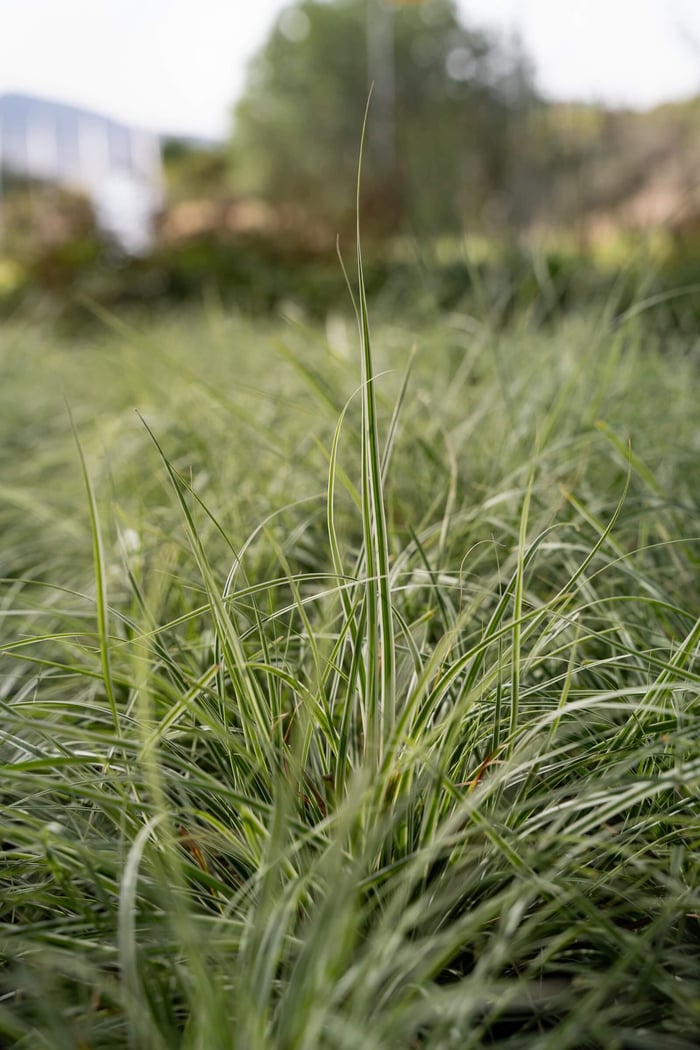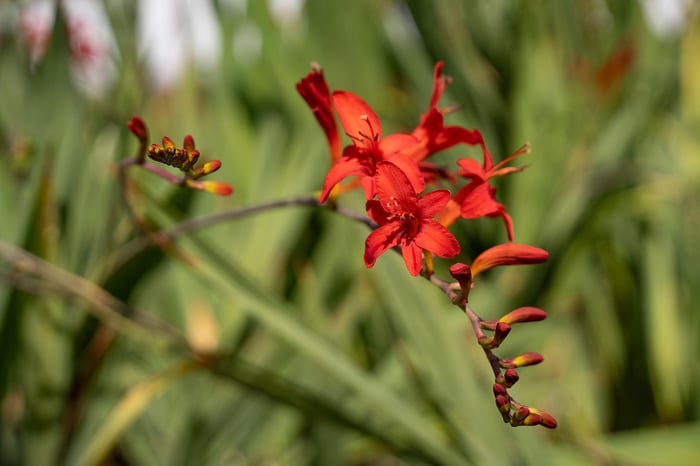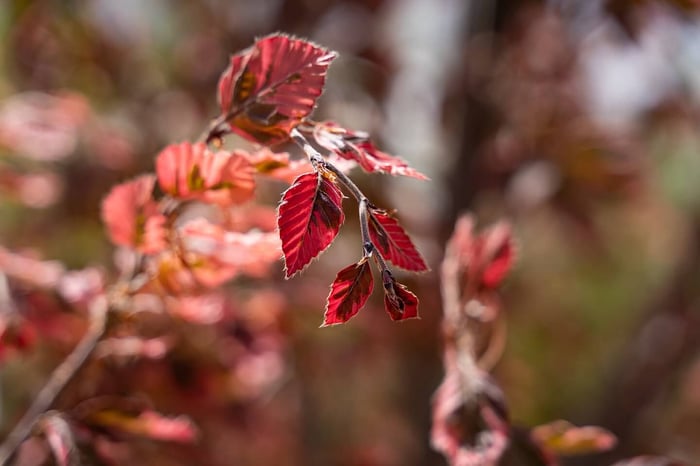In Utah, Idaho, Wyoming and Colorado—where soils are alkaline, summers are hot and dry, winters are cold and windy, and water is precious—the Colorado Blue Spruce is a true landscape gem. A well-placed blue spruce can become the year-round backbone of your mountain garden. As autumn settles across the Intermountain West, few plants bring the same quiet drama to a garden as the blue spruce. And of all the blue spruce cultivars, 'Hoopsii' (Picea pungens glauca 'Hoopsii') is unique. It's prized for its steely, silvery-blue needles and architectural form.
Why Hoopsii?
Hoopsii is all about its amazing color. This cultivar is arguably the bluest of the blue spruces. It stands out easily against other evergreens, makes a beautiful statement in the fall as leaves are changing around it, and it shimmers in near monochromatic beauty in the winter snow. It’s also smaller than the classic Colorado Blue Spruce, so it will fit into a larger variety of landscapes. That said, it’s still a blue spruce. It will typically reach a size of 40 feet tall and 10 to 12 feet wide, however, given the right conditions, it can exceed that growth. Be sure to plant this tree in an area with room for it to grow even larger.
Why gardeners here love it
Striking winter color: The blue-silver foliage complements a snowy winter landscape and stands out against the warm tones of autumn leaves.
Evergreen structure: Its height and size anchors beds and vistas year-round, providing shelter, scale, and vertical interest even in winter.
Attracts wildlife to your yard: It won’t take long for quail, finches, and other small animals to adopt it as their home or safe haven from predators.
Low leaf litter: Compared to deciduous trees, spruce keep tidy forms with little to no pruning, and their needles don't require raking.
Adapted to alkaline soils and low humidity: Once established, with proper placement and drainage, it will thrive in a variety of soil conditions.
Know before you plant
Botanical name: Picea pungens glauca 'Hoopsii'. Common name: Colorado Blue Spruce.
Plant type and size: 40 feet tall by 10 to 12 feet wide, but it is capable of growing larger under the right conditions.
USDA zones: Hardy to zone 2.
Sun: prefers full sun but can tolerate light afternoon shade; at very high elevations the intense UV can bleach needles if combined with drought stress, so placement matters.
Water: moderate once established. Conserve water by deep, infrequent watering using drip or soaker systems.
Practical growing advice for Intermountain gardens
Our region presents a mix of challenges. Typically, your soil will be alkaline with a pH of 7.0 to 8.5. In the valley bottoms, it will be clay-heavy, causing drainage issues, and in the mountains, you'll have rockier, sandier soil. Plus, hot dry summers, and fierce winter winds can threaten to desiccate your plants year-round. These conditions demand a slightly different approach than you might use in wetter, more humid climates. Here are a few practical steps to keep your Hoopsii happy for years to come.
Planting and site selection
Pick a well-drained site. Blue spruce tolerate alkaline soils but will suffer if the roots sit in water. When planting in heavy clay, avoid low spots, or amend your planter bed to create raised planting areas.
Give it room. Even cultivars that start narrow can broaden with age. Allow for mature spread when planting near buildings or other trees.
Protect from prevailing winter winds when possible. Windward exposure increases winter desiccation and needle burn. When possible, plant your spruce in an area protected from the worst winds to reduce stress.
Soil and amendments
Lightly incorporate compost into native soil when planting, but don’t overdo it. Rich amendments can encourage soft growth, which will be susceptible to winter damage.
If drainage is poor, build a slightly raised bed or plant on a berm so roots stay drier and healthier.
Watering and mulch
Establishment: Provide a deep soak once a week (about 1" of water) during the first two growing seasons, adjusting for rainfall and elevation. At low humidity, soil dries faster—check the moisture at the root zone and water when necessary.
Long-term: Avoid frequent shallow watering. Water moderately. Deep, infrequent irrigation encourages root depth.
Mulch heavily: Add 4 inches of organic material to conserve moisture and moderate soil temperature, keeping mulch pulled away from the trunk to prevent rot at the base.
Pruning, feeding and pests
Prune only to remove dead or crossing branches; don’t shear into old wood. Pruning in late spring to early summer is best.
Fertilize lightly only if growth is poor; excessive nitrogen can create lush new growth that is winter-sensitive.
Watch for common spruce pests (spruce beetle, aphids, and adelgids) and signs of needle disorders. Proper placement in your landscape and maintaining the tree’s vigor will reduce the risk of pest invasion.
Preparing for winter
Remember that frozen water is dry water. Utah’s winter temperatures create a frozen desert for evergreens. Even the moisture in the air is freeze-dried. Because evergreen trees and shrubs don’t actually go dormant during winter, it’s critical that you prepare them for the cold season during fall.
Stop fertilizing by midsummer so late-season growth hardens off.
In late fall give a deep watering before the ground freezes—hydrated roots handle winter desiccation much better, and they will revive quickly and grow faster in spring.
For young trees, consider temporary burlap wind screens on the windward side or anti-desiccant sprays in late autumn when winter winds are severe.
After heavy, wet snowfalls, gently broom branches upward to prevent breakage; never shake or pull branches downward.
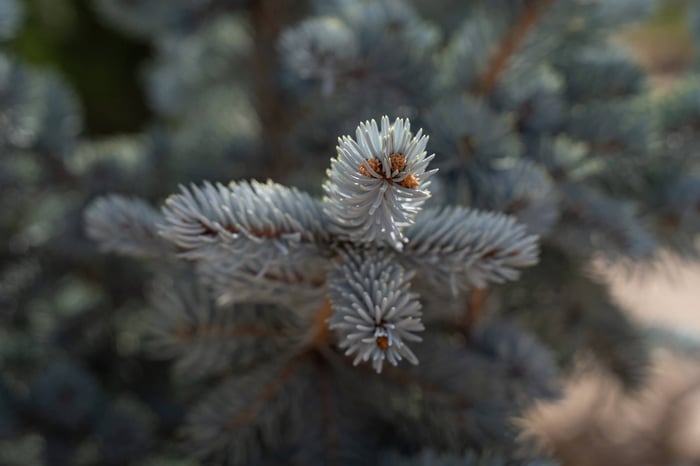
Design ideas for fall and winter
Think of a Colorado Blue Spruce as the permanent, calming element in a seasonal composition. In autumn, the blue-green needles create a cool backdrop for the warm oranges and golds of maples, redbuds, or zelkova trees. Underplant with clumping fescue or blue oat grass for year-round texture—the soft motion from these grasses on breezy days contrasts beautifully with the spruce’s stoic silhouette. Use spruce as a vertical focal point on a small lot, or as an informal screen when planted in groups.
Hopefully we’ve given you enough information about the 'Hoopsii' Blue Spruce for you to make an informed decision. If you’d like this stunning tree in your yard, you can find it in our online catalog. If you have any other questions, we’re always just a click or call away. Good luck and happy gardening!

